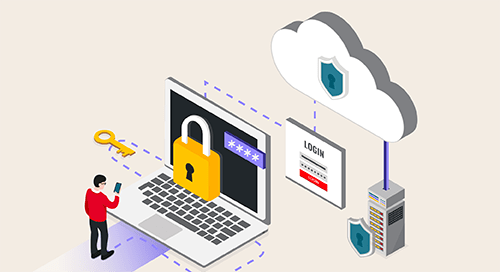The rise of cloud-based applications and multi-cloud strategies is transforming business operations, but integrating systems from various deployment models implies challenges:
- Companies struggle to choose the right deployment model — on-premises, cloud, or hybrid
- Ensuring data consistency and regulatory compliance across different environments presents issues, especially when integrating and securing diverse systems
- Integrating multiple cloud applications across departments adds complexity
- Many users lack the expertise to manage these integration tasks effectively
Top application integration challenges
Complexity. Unique data formats, protocols, and requirements make seamless integration challenging.
High costs. Maintaining IT infrastructure for integration is expensive, straining budgets between maintenance and innovation.
Limited expertise. A lack of specialized knowledge leads to inefficient integration, more errors, and higher costs.
Top application integration objectives
Simplify integration. Streamline application and data source integration to eliminate manual data entry, reduce errors, and automate tasks, ensuring data consistency and improving efficiency.
Reduce costs. Lower IT operational costs by optimizing integration processes, minimizing manual intervention, and improving resource use.
Build scalable, reliable infrastructure. Handle growing data, users, and business needs while maintaining data sovereignty and regulatory compliance.
The solution
Discover Amplify Fusion (formerly Amplify Integration), an enterprise integration solution that fits your existing environment. With a user-friendly interface, non-technical users can integrate applications and data sources across clouds without coding. Easily connect cloud and legacy systems, choosing the deployment model that aligns with your business goals. Simplify integration, reduce the learning curve, and increase productivity.
What makes Amplify Fusion unique?
4 key capabilities that ensure a robust and reliable solution capable of handling complex integration scenarios:
- Single solution. Address a wide range of integration patterns such as files, events, messages, and APIs.
- Easy-to-use interface. Design and manage integration flows with a user-friendly advanced monitoring, and reprocessing capabilities.
- Flexible deployment. Gain high availability, scalability, and the freedom to choose applications and models (multi-cloud, multi-region, hybrid) that align with business goals, enabling quick adaptation to changing needs.
- Regulatory compliance. Ensure integration flows meet legal requirements across environments, maintaining data security and compliance.
Customer illustration: Synchronizing PLM and ERP with Amplify Fusion
SWISSto12 manufactures advanced satellite payloads and Radio Frequency systems, including the HummingSat, a small geostationary telecommunications satellite developed with ESA. THe company's patented 3D-printing technologies enable lightweight, compact, and high-performing RF products. In addition to its space portfolio, SWISSto12 is active in telecommunications and aeronautics, holding the largest global IP portfolio for 3D-printed RF applications.
Challenge
Rapid growth brought challenges, especially in managing the design and production phases of satellite creation, which involve numerous suppliers and specific production environments. They have to maintain similar data across their PLM (Windchill) and ERP (Microsoft Dynamics), both SaaS-based applications.
Data such as product details and supplier information must be shared between those two applications. This involves maintaining thousands of items and handling around 20 data modifications daily. Manually entering this data is time-consuming and prone to errors, impacting data quality.
Business needs
SWISSto12 wanted a cloud solution to limit costs and complexity, ensuring data security to protect sensitive information. They sought a solution with limited investment, but significant ROI, scalability for future growth, and accessibility for non-IT users. A key requirement was a user-friendly interface that allowed easy design and modification of integration flows.
Benefits of using Amplify Fusion
Benefits include reduced order errors and optimized production processes, saving time previously spent on manual tasks. It also improves collaboration between design and production teams, fostering better teamwork and efficiency.
Ready to overcome the challenges of application integration?
















